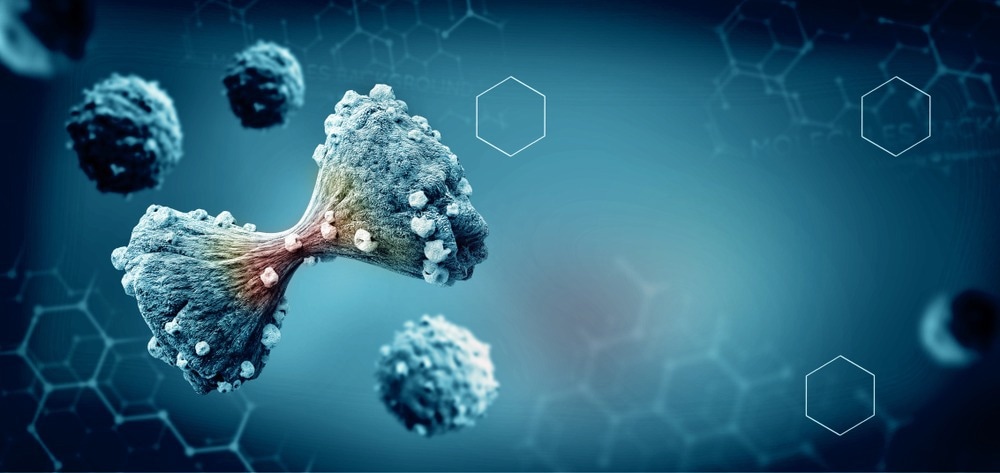A new study published in Clinical Radiology shows a technique based on Amide Proton Transfer (APT) capable of imaging the pathophysiology of bladder cancer (BCa) causing tissue at the molecular level. Research efforts carried out at the Department of Radiology, Tongji Hospital, School of Medicine, Tongji University by the group of Professor P. Wang has the potential to image mobile proteins in BCa cells.

Study: The feasibility of amide proton transfer imaging at 3 T for bladder cancer: a preliminary study. Image Credit: Giovanni Cancemi/Shutterstock.com
When a tumor—a development of abnormal tissue—forms in the bladder lining, the resulting medical condition is referred to as bladder cancer (BCa). While, on many occasions, the tumor does not invade the bladder muscle, there exists the potential for the tumor to be invasive. The two variations are non-muscle-invasive BCa (NMIBC) and muscle-invasive BCa (MIBC). The latter condition can grow aggressively but still lacks a sound prognosis.
Diagnostic Methods for Bladder Cancer
To diagnose BCa, and assess bladder muscle invasion, a variety of imaging methods have been implemented. Some of these techniques used in clinical practice are computed tomography urography (CTU), ultrasound and magnetic resonance imaging (MRI). MRI has emerged as the optimum imaging technique to evaluate and assess BCa.
Several MRI implementation sequences have been applied for BCa detection. For example, diffusion tensor imaging (DTI), diffusion-weighted imaging (DWI), diffusion kurtosis imaging (DKI), and perfusion-weighted imaging (PWI), are all different MRI functional sequences. However, these clinical procedures have limited ability to image the pathophysiology of BCa cells effectively. New molecular MRI methods are required to adequately diagnose the stage and type of BCa.
Amide Proton Transfer Imaging (APT)
APT-based MRI techniques have been developed recently to improve on the limitations of previous methods. APT is a Chemical exchange saturation transfer (CEST) method that has the potential to offer higher sensitivity evaluations of mobile proteins.
APT is a relatively new MRI contrast technique in which exogenous or endogenous compounds that contain exchangeable protons are selectively saturated. A living system, such as an organism, tissue, or cell, produces endogenous substances and activities. Exogenous substances and processes, on the other hand, come from outside the body of an organism. After the saturation has been transferred by proton exchange to water protons, imaging sensitivity is gradually increased by prolonged changes in the water signal. Water MRI signal intensity is used as an indirect measurement which depends on mobile proteins and peptides are distributed.
Verification of APT on Human Subjects
Prof. Wang’s group has applied APT to evaluate BCa by changing the variable parameters of APT and investigating the effects. Concentrations of protein and acidity levels were changed and the impact on APT imaging was studied.
Phantoms, objects used as stand-ins instead of human tissues in clinical trials, were meticulously prepared for the APT protocols as elaborated in the Clinical Radiology article. Human subjects with informed consent participated in this study to verify the reliability of APT imaging.
The APT imaging experiment was conducted between March 2021 and September 2021. The sample size included 21 patients suspected of having BCa and 11 healthy volunteers. The ensemble of volunteers accounted for males and females of different ages.
Current, accepted theory suggests that aggressive tumor cells will produce higher levels of proteins and peptide metabolites. The APT detection results obtained by varying the protein concentrations and pH levels show an increased APT signal consistent with theory. This conclusion infers APT imaging can be a valuable tool for detecting the pathology of BCa.
According to the theory, active tumor cell proliferation results from substantially higher quantities of cytoplasmic protein and peptides in higher grades or stages of BCa. The current study also shows that it might be possible to grade and stage BCa using APT imaging
Improvements to the Current APT Study
The sample size undertaken in the current study is relatively small. To gain valuable insights a larger volunteer group would be required. Results obtained from the smaller group could have some biased outcomes. The tumor region imaged in this study had a limited cross-sectional area. Analysis of full tumors can produce a more accurate reflection of the APT imaging potential.
Future Outlook
While there remain several avenues of improvement in APT imaging technology, the results show better BCa pathology data than previous methods. The outcome of this study attests to the potential to employ APT imaging for BCa. In combination with other established MRI protocols, APT imaging is an effective tool for determining the tumor grade and muscular invasion in BCa.
References
F. Wang, Y. Xu, Y. Xiang, P. Wu, A. Shen, P. Wang. The feasibility of amide proton transfer imaging at 3 T for bladder cancer: a preliminary study, Clinical Radiology, 2022, ISSN 0009-9260, https://www.sciencedirect.com/science/article/pii/S0009926022003348
Disclaimer: The views expressed here are those of the author expressed in their private capacity and do not necessarily represent the views of AZoM.com Limited T/A AZoNetwork the owner and operator of this website. This disclaimer forms part of the Terms and conditions of use of this website.